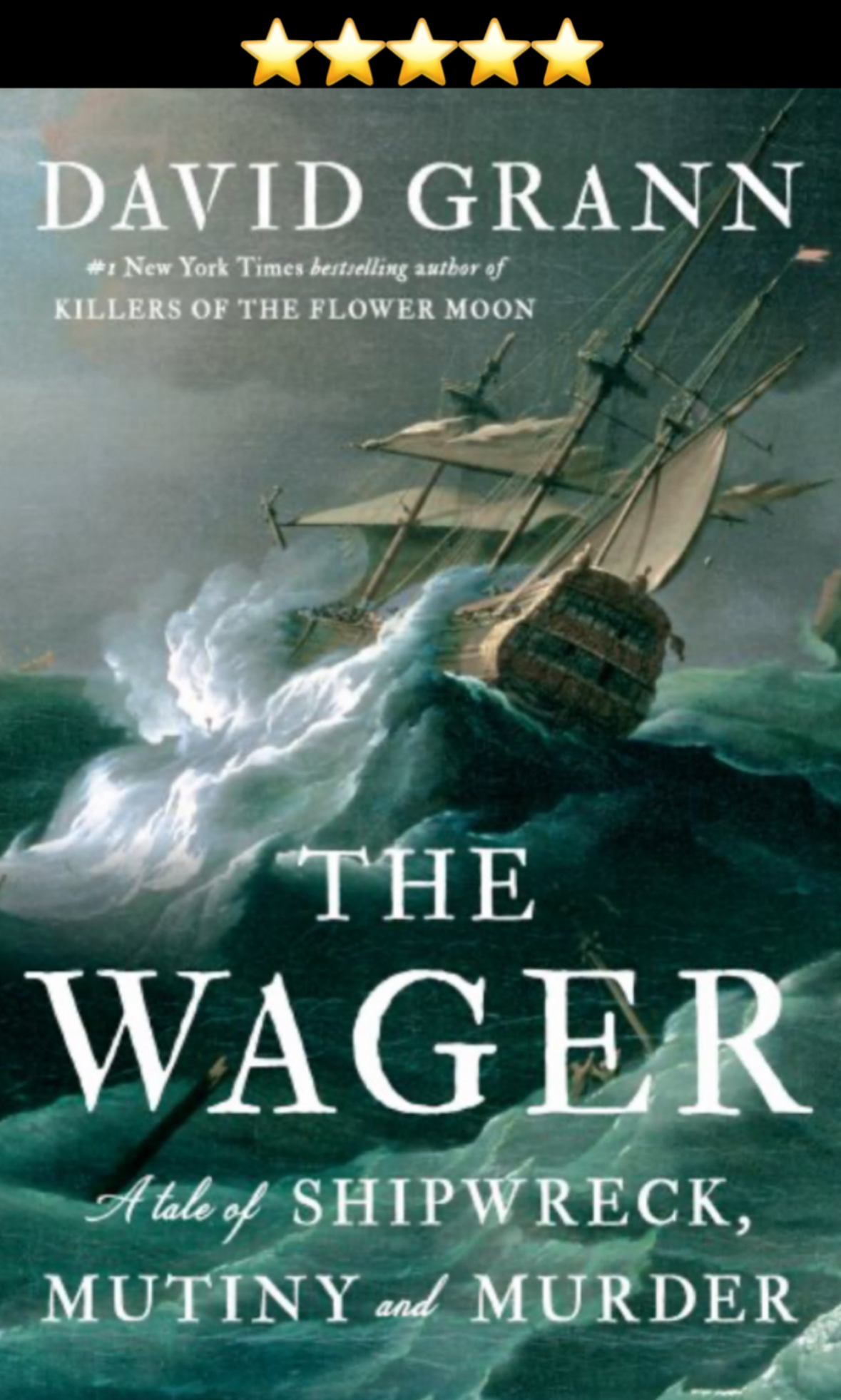Date: May 19, 2025
Author: David Grann
Title: The Wager
If I am what I read then today I am studying to become a crew member of an old, old wooden ship by the name of Wager. Part of the fleet of English Man-of-War ships in the 1740’s dispatched from England to battle the Spanish fleet. This was a duty not for the faint of heart.
This gallant crew was in trouble almost from the outset of the journey, battling diseases which included but were not limited to scurvy. I had no idea what scurvy was prior to reading this tale, turns out it was bad. Really, really bad. Caused by a Vitamin C deficiency, the sailors started to fall apart, literally.
Once the ships of this naval fleet achieved the southernmost tip of the America’s, Cape Horn, they wrecked on rocks right offshore of what became known as Wager Island. They made their way to the nearby shore where they proceeded to starve from lack of nutrition and without a source of food other than wild celery and seaweed, they returned to the stranded and broken Wager, time and again, to pillage from the stores onboard. What little they were able to come up with was rotten and rancid.
A nice, indigenous tribe, known as, Kawésqar, decided to take pity on the sad and starving men. The women of the tribe had the uncanny ability to dive up to 30 feet down and into the frigid waters, coming back with baskets full of mussels and such. Incredibly able to survive super long periods of holding their breath.
This lasted until a group of sailor rebels began harassing the women. Feeling unappreciated and uncomfortable they fled in the dark of night. Thus, the sailor’s source of sustenance slipped away with them.
Now what? Back to starving they went.
Some of the rebel group were caught red-handed stealing from their small supply of precious food. Their punishment? 600 lashings each. It was too much of a punishment to be doled out all at once, so they split it up between 3 days. 200 lashings per day. Those charged with delivering the punishment had to take turns whipping the accused because it was too tiring for one man to handle alone.
After 7 months of near starvation, they decided to take their chances once again on the high seas. Mutiny ensued and the captain was demoted by popular vote and chose to stay behind along with a handful of his crew, which included a man by the last name of Byron, great-grandfather of Lord Byron.
Fun fact: when a person has become dangerously emaciated, if they are able to get their hands on a large quantity of food and proceed to gorge themselves, they run the risk of death due to something called refeeding syndrome.
Fun fact part deux: the naval fleet was crafted from giant oaken logs. Huge forests were cut down to craft these vessels. Because of the nature of wood, they were susceptible to rot from being in the water, also termites, and something called teredo navalis, a reddish shipworm which can grow longer than a foot, gobbled up susceptible boats. Many times the boats were already rotting out before they were even finished building them.




